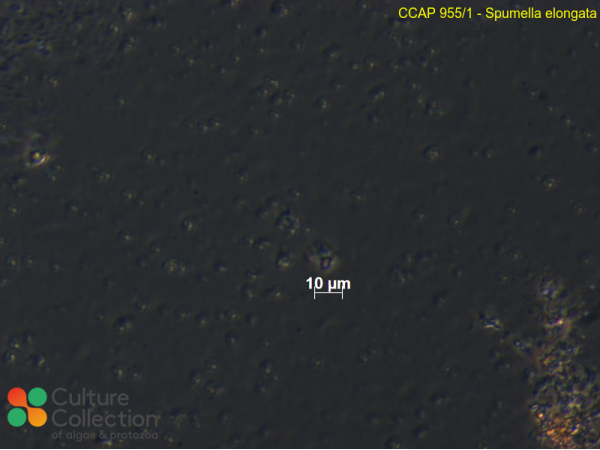References [ 6 ]
Pålsson C & Daniel C (2004) Effects of prey abundance and light intensity on nutrition of a mixotrophic flagellate and its competitive relationship with an obligate heterotroph. Aquatic Microbial Ecology 36: 247-256.
Wylezich C, Nies G, Mylnikov AP, Tautz D & Arndt H (2010) An evaluation of the use of the LSU rRNA D1-D5 domain for DNA-based taxonomy of eukaryotic protists. Protist 161: 342-352.
Boucard TK, Parry J, Jones K & Semple KT (2004) Effects of organophosphate and synthetic pyrethroid sheep dip formulations on protozoan survival and bacterial survival and growth Fems Microbiology Letters 47: 11-127.
Grossman L, Bock C, Schweikert M & Boenigk J (2015) Small but manifold - hidden diversity in "Spumella-like flagellates". Journal of Eukaryotic Microbiology 63: 419-439.
Dorrell RG, Azuma T, Nomura M, Audren de Kerdrel G, Paoli L, Yang S, Bowler C, Ishii K, Miyashita H, Gile GH & Kamikawa R (2019) Principles of plastid reductive evolution illuminated by nonphotosynthetic chrysophytes. PNAS 116 (14): 6914-6923.
Deeg CM, Zimmer MM, George EE, Husnik F, Keeling PJ & Suttle CA (2019) Chromulinavorax destructans, a pathogen of microzooplankton that provides a window into the enigmatic candidate phylum Dependentiae PLoS Pathogens 15: e1007801.
Sequences [ 2 ]
EMBL/Genbank Links
(Bold text = submission by CCAP staff or collaborators)
Division/Phylum: Heterokontophyta/Ochrophyta Class: Chrysophyceae Order: Chromulinales
Note: for strains where we have DNA barcodes we can be reasonably confident of identity, however for those not yet sequenced we rely on morphology
and the original identification, usually made by the depositor. Although CCAP makes every effort to ensure the correct taxonomic identity of strains, we cannot guarantee
that a strain is correctly identified at the species, genus or class levels. On this basis users are responsible for confirming the identity of the strain(s) they receive
from us on arrival before starting experiments.
For strain taxonomy we generally use AlgaeBase for algae and
Adl et al. (2019) for protists.
| Attributes |
| Authority | (Stokes) Belcher & Swale 1976 |
| Isolator | Belcher & Swale (1974) |
| Collection Site | Girton, Cambridgeshire, England, UK |
| Climatic Zone |
Temperate |
| Axenicity Status |
Bacteria and other organisms present |
| Area |
Europe |
| Country |
UK |
| Environment |
Soil |
| GMO |
No |
| In Scope of Nagoya Protocol |
No |
| ABS Note |
Collected pre Nagoya Protocol. No known Nagoya Protocol restrictions for this strain. |
| Collection Date |
c 1974 |
| Original Designation |
LB 995/1 |
| Pathogen |
Not pathogenic: Hazard Class 1 |
| Strain Maintenance Sheet |
|
| Toxin Producer |
Not Toxic / No Data |
| Type Culture |
No |
| Taxonomy WoRMS ID |
610298 |


